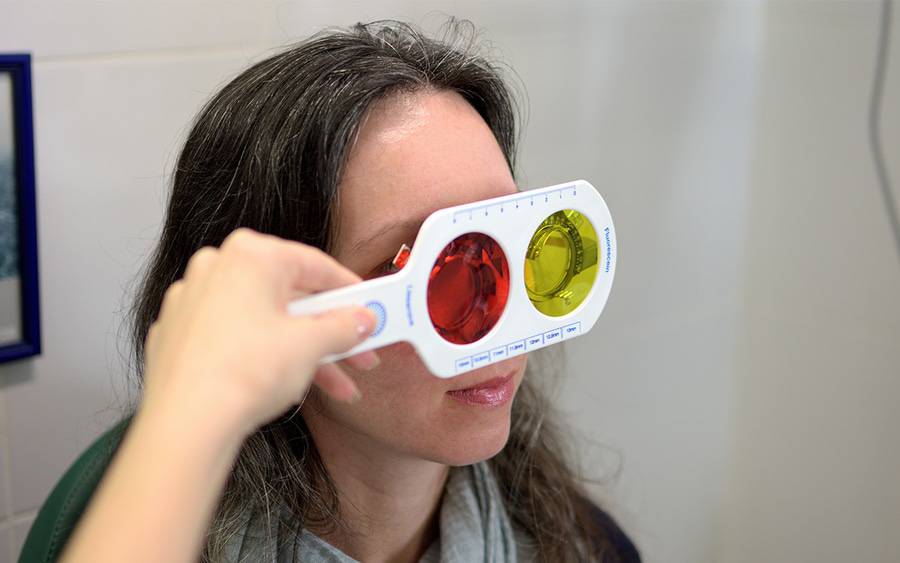What Is Color Vision Deficiency?
Also known as color blindness, it can affect everyday activities

Also known as color blindness, it can affect everyday activities
Imagine being unable to tell the difference between a red apple and a green one at the store. Or more concerning — telling the difference between a green and a red traffic light in traffic.
Color vision deficiency — also known as color blindness — is the inability to see certain colors the way everybody else sees them.
“Deficits in color vision can range from mild to severe,” says Ray Gariano, MD, an ophthalmologist at Scripps Clinic Rancho Bernardo and Scripps Clinic Torrey Pines.
“Most people affected by this condition can see colors, but certain colors can be confused for others and create problems of varying degrees. It all depends on the type of color vision deficiency that they have.”
How does reduced color vision affect your life?
Color vision deficiency is generally not considered to be a disabling condition. But it can impact your everyday life.
Reduced sensitivity to certain colors can interfere with activities, such as driving, shopping or reading a computer screen. Certain careers that require acute color vision, such as a graphic designer, may not be options for people with deficits in color vision. Children may have difficulty in school if their teachers are not aware of the problem.
What causes color vision deficiency?
Poor or deficient color vision is caused by a problem with the color-sensing granules — known as pigments — found in the cones in the eye. The cones are nerve cells in the retina, which acts like a camera, converting the images that come through the eye into electric signals and sending them to the brain.
Most people have three types of cone cells. Each type senses red, green or blue light. The amount of each color that your cones sense determines what colors you will see.
What are types of color vision deficiency?
People with color vision deficiency may have difficulty seeing one of the three basic colors, depending on which cones they may be missing or how the cones are affected.
For example, they can see blue and yellow but can’t distinguish between red and green. Others may see all three but be unable to tell the difference between shades of one color like shades of red, or between similar colors such as light green and gray.
“People with reduced color vision may be able to see many colors but they may see them differently than most people. The differences often are so subtle that the condition can go undetected,” Dr. Gariano says.
How common is color vision deficiency?
Color vision deficiency is usually inherited and is much more common in men than women. About one in ten men have some difficulty seeing color, according to the American Academy of Ophthalmology. The most common forms involve distinguishing greens and reds.
“In some cases, color vision deficiency is caused by other factors not related to genetics, including aging, injuries to the eye and eye problems, such as cataracts, glaucoma, optic nerve disorders or macular and retinal degenerations,” Dr. Gariano says.
Some medications can interfere with color perception, he adds.
In rare cases, people see no color at all — only black, white and gray. This is known as achromatopsia and may be associated with other conditions, such as severe light sensitivity and very poor vision.
Color vision test
An eye doctor — an ophthalmologist or optometrist — can diagnose color vision deficiency through several tests that measure ability to recognize and distinguish between different colors. One test determines how well you can see a pattern, such as a letter, number or shape, against a background of multi-colored dots.
Depending on which patterns you can or cannot see, your doctor can diagnose your color perception abilities. Another test may ask you to arrange colored chips in similar groups.
Other causes for reduced color vision
While there is currently no treatment available for inherited color vision deficiency, gene therapies are being tested in human clinical trials, Dr. Gariano notes.
Also, reduced color vision caused by medications or an eye problem, such as cataracts, may be treatable, he adds.
Glasses that block glare often help color-blind people distinguish colors better, and colored contact lenses may help in some cases.
Most people are easily able to compensate by using other visual cues such as where an object is located or what colors surround it.
Anyone who experiences a significant change in color perception should see an eye doctor, however.